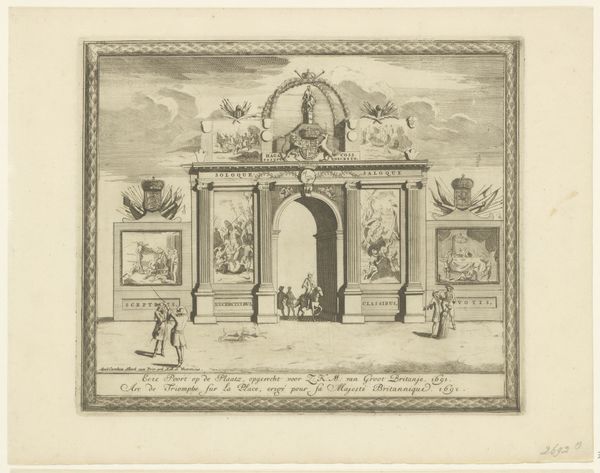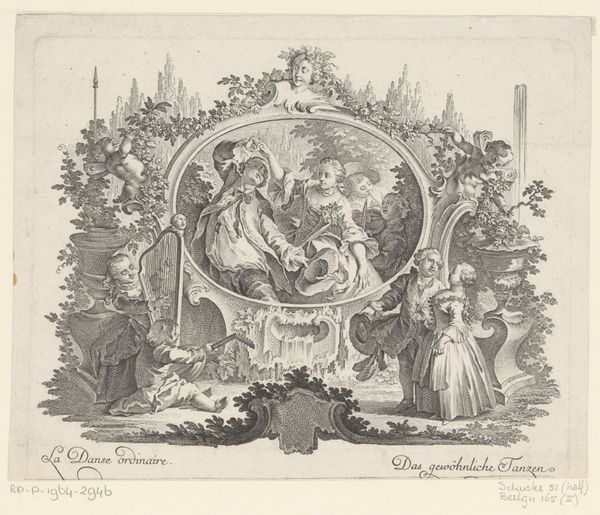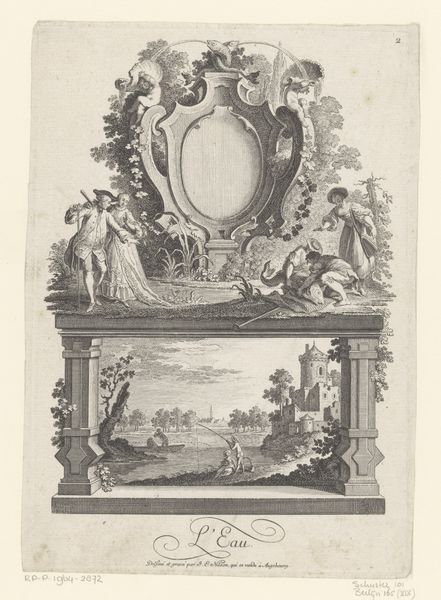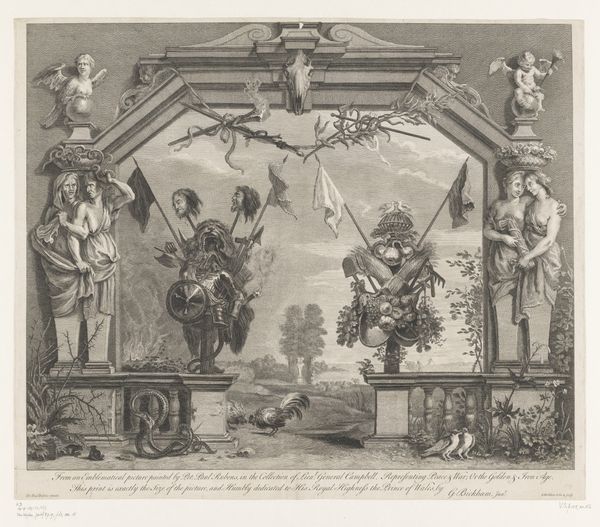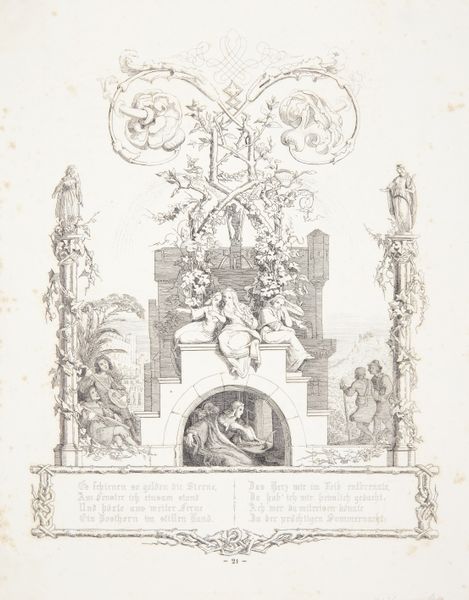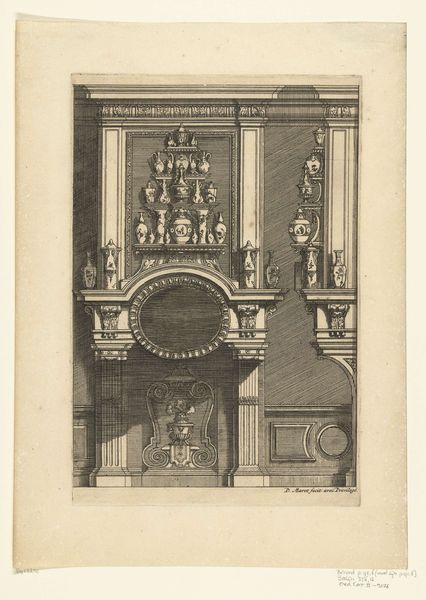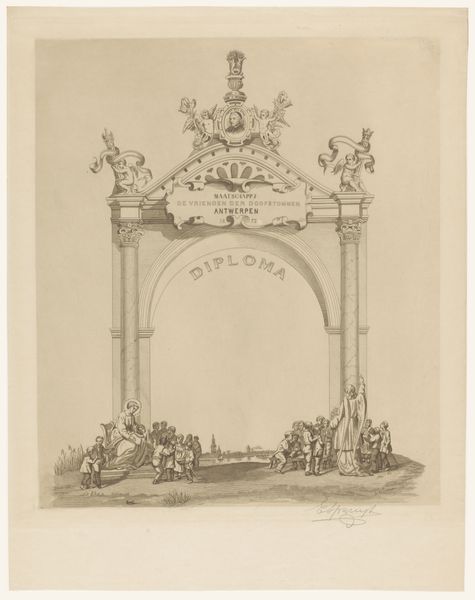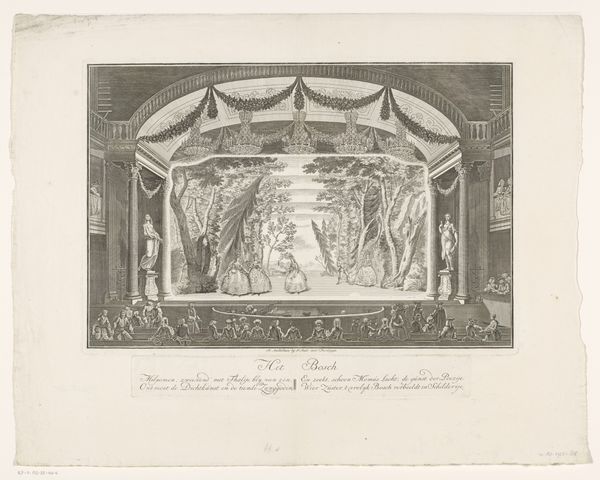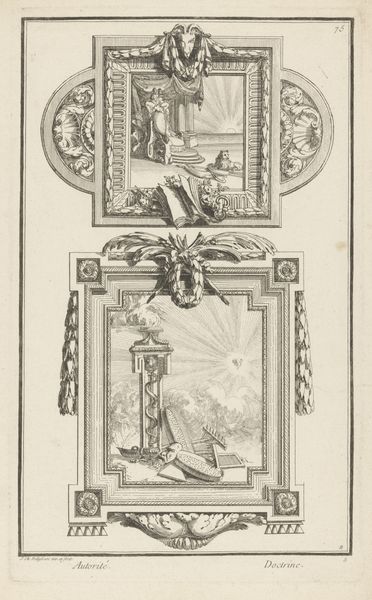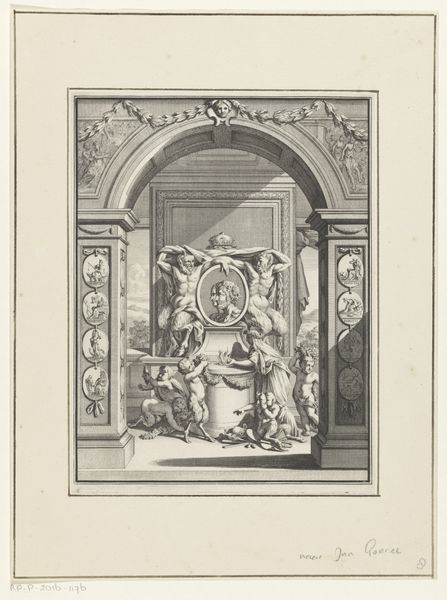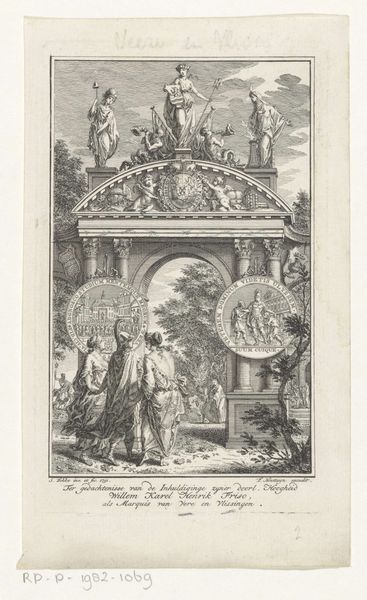
print, engraving
baroque
line
cityscape
genre-painting
engraving
Dimensions: height 244 mm, width 167 mm
Copyright: Rijks Museum: Open Domain
Curator: Look at this intricate engraving. It's titled "Vuur," which translates to "Fire" in Dutch. The artist is Johann Esaias Nilson, and the print resides here at the Rijksmuseum. What are your initial thoughts? Editor: My first impression? It feels… theatrical. Like a stage set for a very mannered, baroque drama. All those posed figures and the ornate frame surrounding… is there a hidden story there? Curator: Most definitely. The piece depicts aspects of fire, as understood in its time: specifically how fire brings animation into the city. Fire as something that happens in, and defines, civilization. The scenes showcase fashionable people meeting or parting, a fashionable version of carpe diem perhaps, while the fireworks above the blank heraldic crest further emphasizes excitement. Editor: A controlled fire, then, safely contained within social ritual and urban life, rather than a raging wildfire of uncontrollable passions, fascinating. Even the architectural elements, those little garden pavilions in the lower panel—they look like stage props. And the frame itself looks almost alive, with its own leafy and radiant embellishments, it serves as this space which contains everything. Curator: Exactly, the decorative frame is central to its cultural weight. These aren't just random figures; they represent the well-to-do. The blank space in the elaborate cartouche could’ve been personalized for a buyer of the print—adding family crests to affirm power through displays of material consumption as fire made this possible for workshops and emerging industrial manufacturing. Note the contrast: an army officer under an overgrown arbor in the corner, juxtaposed against a garden of perfectly-arranged encounters among elite society. Editor: So, it's about displaying power and progress but within very strictly defined boundaries. I guess this ordered social arrangement and architectural composition tells you something about people's aspiration at this historical moment. How interesting that the blank space serves both for material consumption as well as aspiration. It really gives food for thought as a depiction. Curator: Precisely. Visual culture acts as social barometer. Well, that was rather illuminating, wouldn't you say? Editor: Definitely fired up some new insights! Thanks for showing the deeper historical relevance through symbols.
Comments
No comments
Be the first to comment and join the conversation on the ultimate creative platform.

